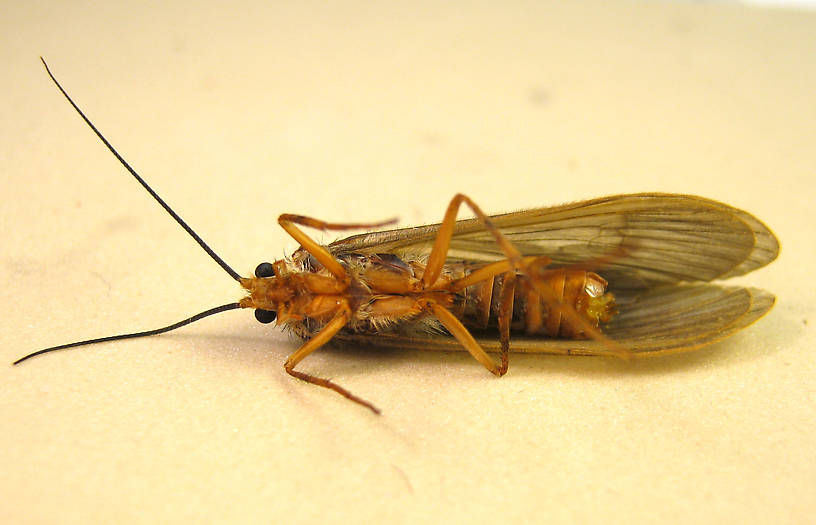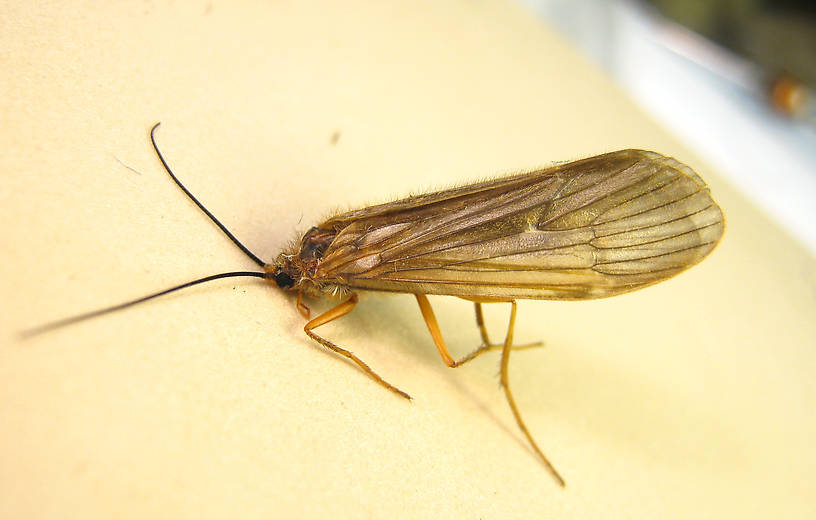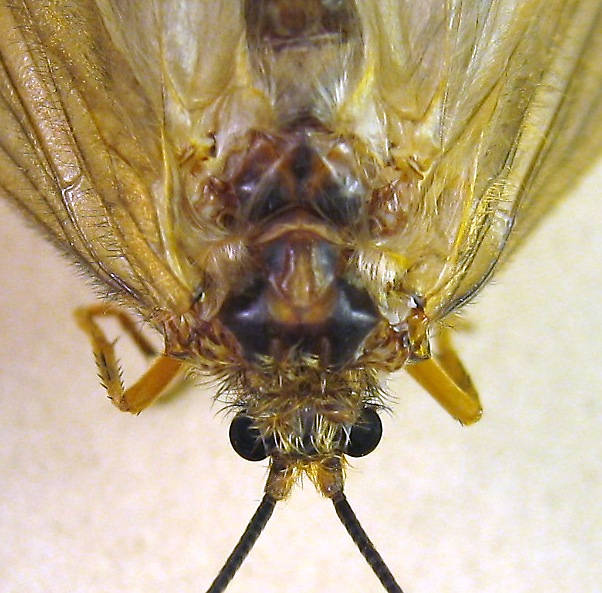Blog & Latest Updates
Fly Fishing Articles
Insects by Common Name


Female Dicosmoecus atripes (October Caddis) Caddisfly Adult Pictures
Classification
Kingdom
Animalia (Animals)
» Phylum
Arthropoda (Arthropods)
» Class
Insecta (Insects)
» Order
Trichoptera (Caddisflies)
» Family
Limnephilidae (Northern Caddisflies)
» Species
atripes (October Caddis)
This specimen is 26 mm.
- Entoman
This caddisfly was collected from the St. Joe River on September 27th, 2013 and added to Troutnut.com on September 29th, 2013.
Recent Discussions of this Adult
Gilvipes or atripes? 7 Replies »
These two species are very difficult to tell apart. Because of the fuscated wing veining and black antennae, I'm leaning towards gilvipes, but it is my understanding that these characters are not very dependable. Regardless, both are the October caddis of western lore and can provide awesome dry fly fishing if the angler is lucky enough to hit it right.
There is some debate over which flies work better, dries or nymphs. I come down on the side of dry flies. I have rarely found the pupa effective, and even when they are it's often a darker color than the conventional orange that works best. For years I struggled with this until learning that the pupa (more properly called pharates) usually crawl out on shore to ecclode in the darkness of night. Since they also start from their rock cabins in very shallow water to begin with - not much nymphing opportunity there... It is highly doubtful that trout have the opportunity to feed much on the pharates, let alone enough to become selective. It is my opinion that when the pupal imitations work well, it is because they are either taken for drowned adults or perhaps it's just an attractor response to what looks like a big chunk of protein. Big fish often lose their caution this time of year as fishing pressure abates and storing calories for the Winter becomes a prerequisite.
ReplyThere is some debate over which flies work better, dries or nymphs. I come down on the side of dry flies. I have rarely found the pupa effective, and even when they are it's often a darker color than the conventional orange that works best. For years I struggled with this until learning that the pupa (more properly called pharates) usually crawl out on shore to ecclode in the darkness of night. Since they also start from their rock cabins in very shallow water to begin with - not much nymphing opportunity there... It is highly doubtful that trout have the opportunity to feed much on the pharates, let alone enough to become selective. It is my opinion that when the pupal imitations work well, it is because they are either taken for drowned adults or perhaps it's just an attractor response to what looks like a big chunk of protein. Big fish often lose their caution this time of year as fishing pressure abates and storing calories for the Winter becomes a prerequisite.
Start a Discussion of this Adult:
Top 10 Fly Hatches
Top Gift Shop Designs
Eat mayflies.
Top Insect Specimens
Miscellaneous Sites
Troutnut.com is copyright © 2004-2024 Jason
Neuswanger (email Jason). See my FAQ for information about use of my images.
 privacy policy
privacy policy






